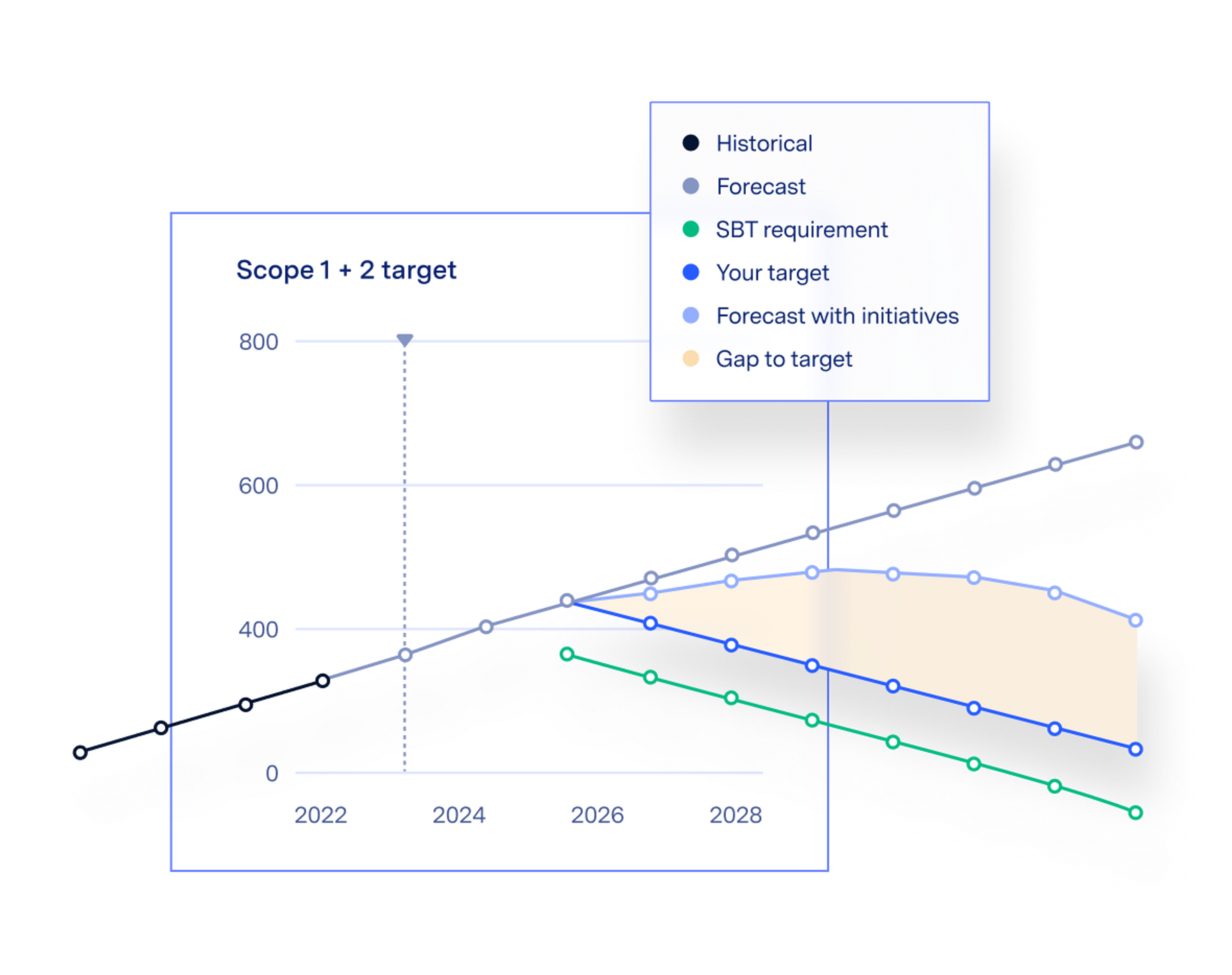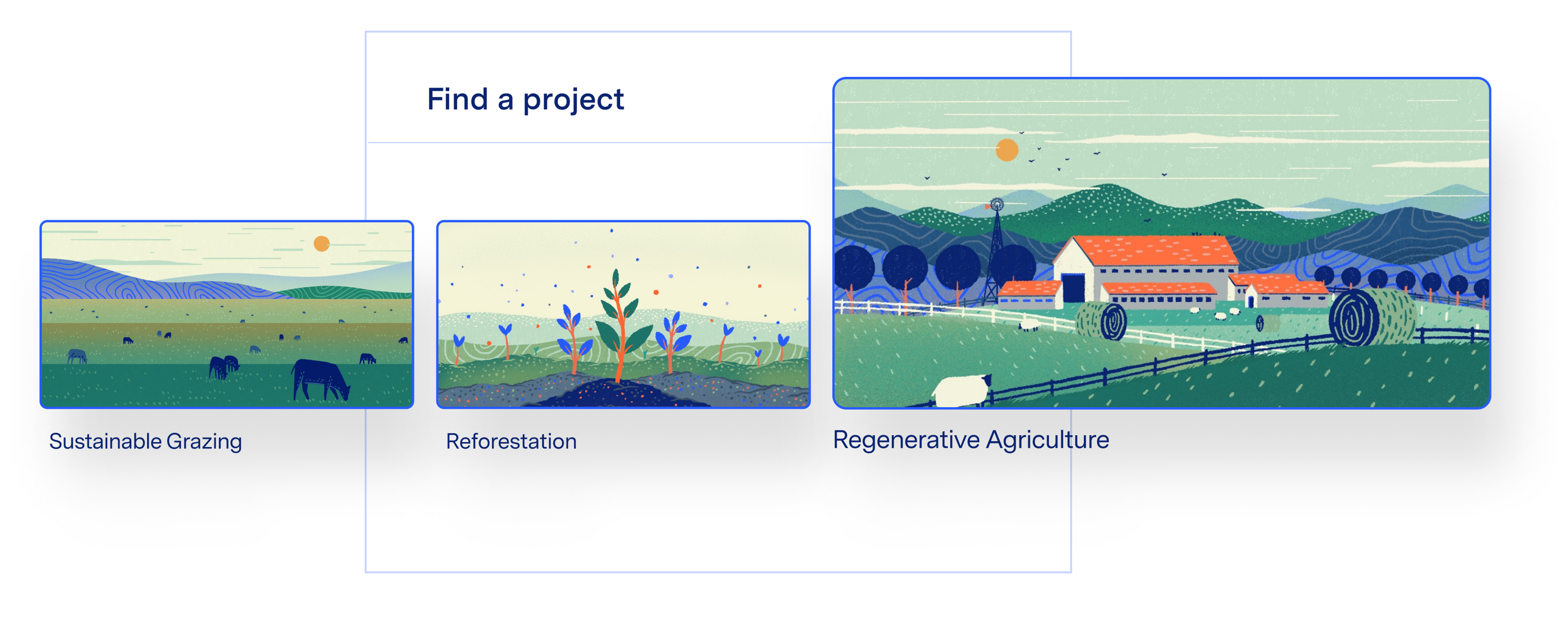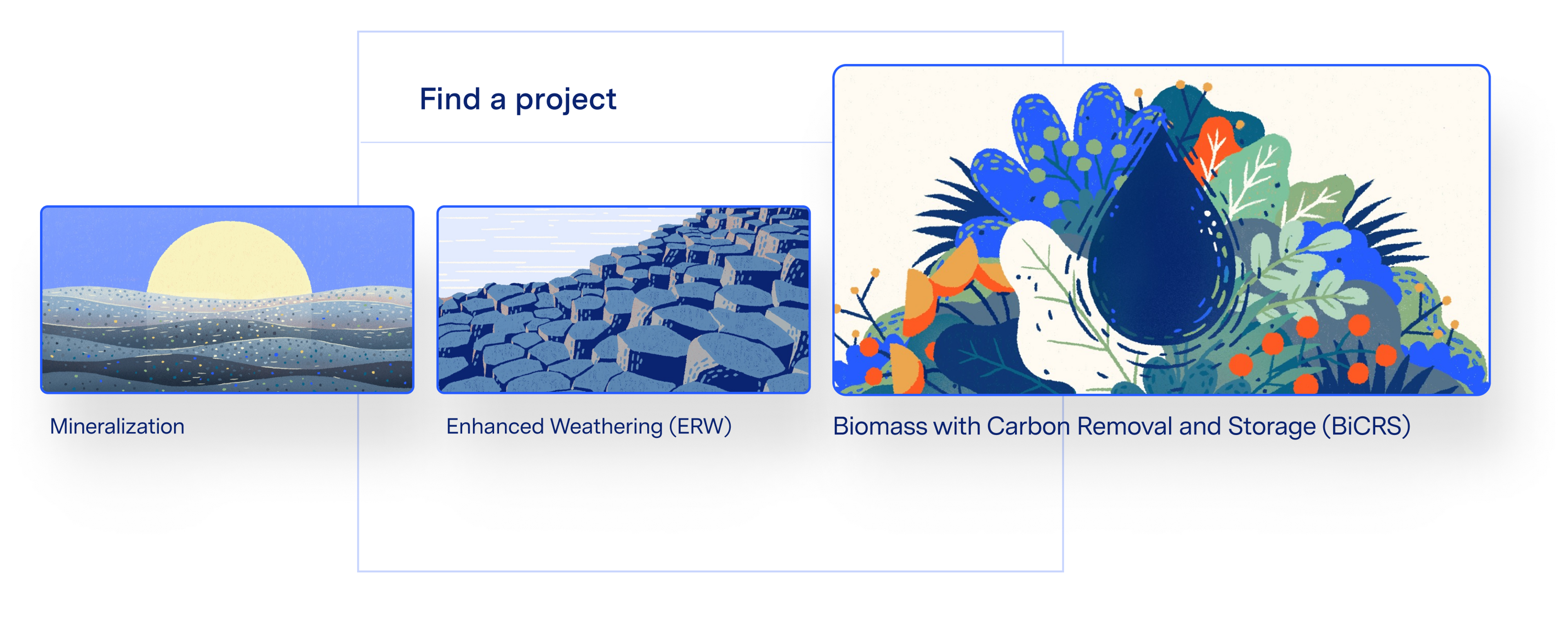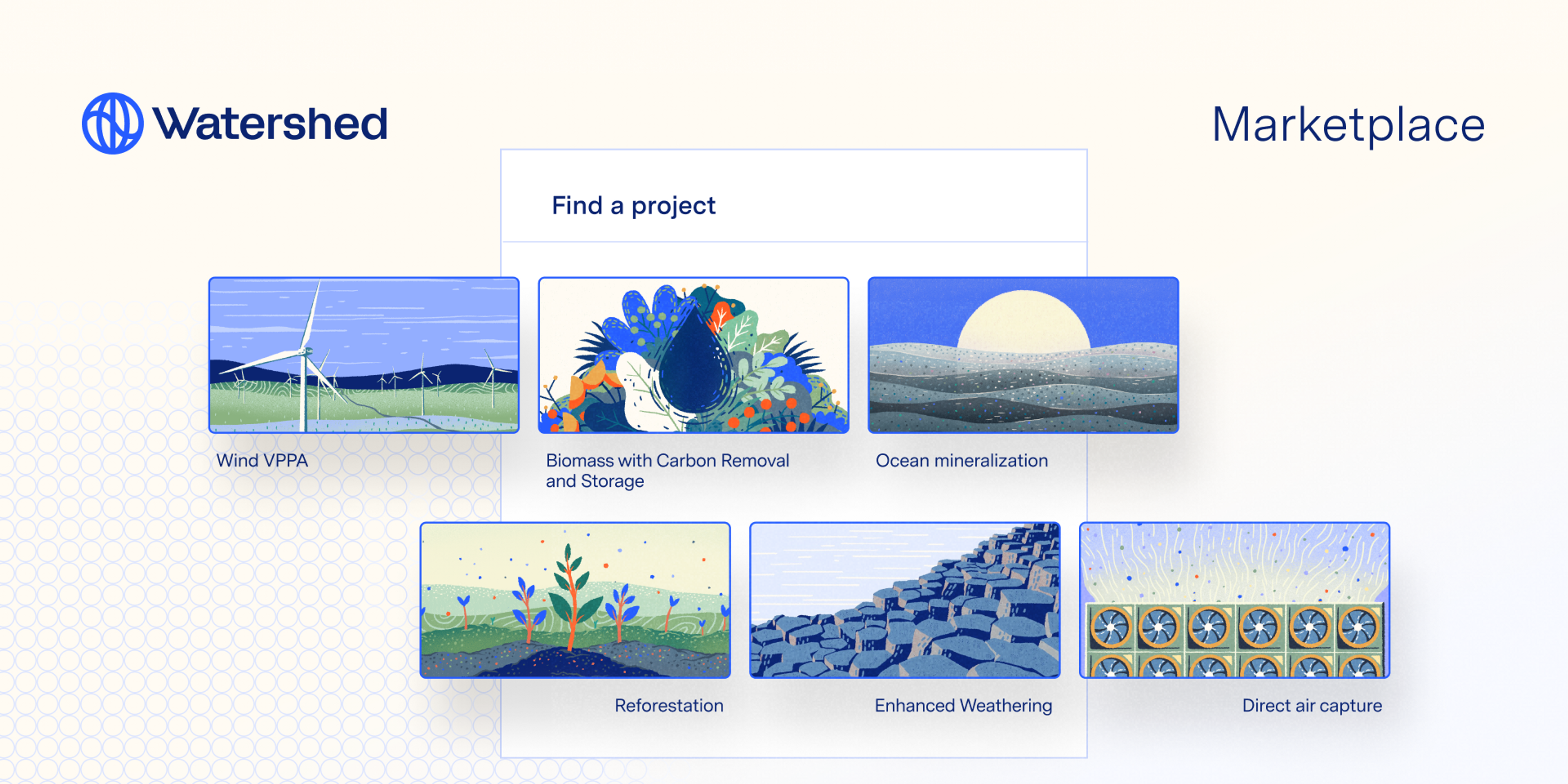Companies need to activate all possible decarbonization levers to deliver on climate commitments. These levers include both reductions in their own business and supply chain, and reductions from purchasing high-quality carbon credits.
Yet the path to decarbonization is full of obstacles: project research requires expertise and time, not everyone has an in-house expert in every carbon removal technology, the minimum buy-in required to access the highest quality solutions can be prohibitive, and the risk of greenwashing accusations looms large.
The Watershed Marketplace addresses those challenges by setting an extraordinarily high bar for quality and proven results, all while making projects accessible to a wide range of buyers and budgets. Our approach to climate action is centered on the belief that while all customers are different, they share the same goal: real, tangible progress towards reducing the world’s emissions.
For each of our customers, we start with our blueprint for exponential climate action:
Focus first on reductions
Watershed Marketplace programs are a complement to carefully designed reduction plans. They both need to happen together, and the world’s leading companies are showing how it’s done. Being able to show real progress towards reducing emissions and simulating how changes drive business results are both critical for getting company buy-in. Your reduction plans will inform your priorities for climate projects, such as clean energy for reducing scope 2 emissions. Although purchasing RECs from existing projects can be low-impact, Watershed is making virtual power purchase agreements (VPPAs), which sponsor the construction of a new renewable energy project, available to all companies, regardless of electricity demand. These clean power programs are not just for your company: Watershed has devised programs to bring them to your suppliers or portfolio companies so you can decarbonize your scope 3 emissions too.

Fund near-term solutions to remove what you emit
Scientific consensus — as reflected in the latest IPCC report — is that the world will need large-scale permanent carbon dioxide removal (CDR) to have any chance of meeting our climate targets. To buy us time to scale up these solutions, companies should fund near-term, nature-based carbon removal (such as reforestation or regenerative agriculture), or high-potency greenhouse gas avoidance projects that are already delivering, such as refrigerant destruction.
These projects can provide important near-term environmental and socioeconomic benefits, decrease peak warming, and build local resilience to climate change impacts. As you’re thinking about where to put your dollars, make sure you’re supporting projects that are scientifically sound and lasting, and are considering multi-year contracts that deliver sufficient volumes for your climate goals.

Invest in long-term programs
Make your investments by envisioning what is needed in 10-30 years and placing your resources to transform markets and innovate in sectors that are critical to reach our collective climate goals. Many of these projects, like permanent carbon removal technologies we support through our partnership with Frontier, need guaranteed future demand to scale up. Similarly, sustainable aviation fuel, an important lever to address the difficult-to-decarbonize aviation sector, is in early stages today, and investments will increase its use in commercial flights so it becomes a near-term solution. By buying permanent carbon removal and sustainable aviation fuel today, corporations can catalyze promising new solutions, meaningfully contribute to the world’s path to net zero, and set new standards for corporate climate action that position you as a sustainability leader to your customers, employees and investors.

Take action, and keep acting
Now that you’ve got a blueprint, it’s time to act. Watershed is your partner in building out the floors of your blueprint. You can work with our experts to tailor and implement your program. It’s all about investing in projects that work for the planet, and your business too.






